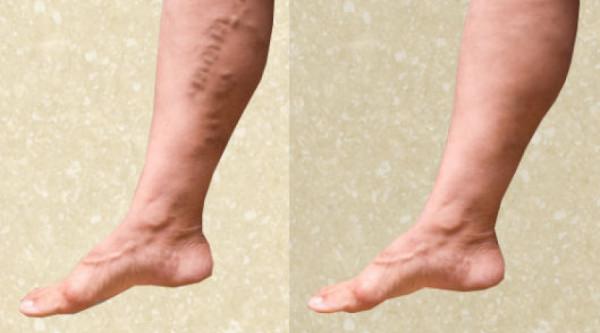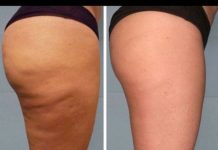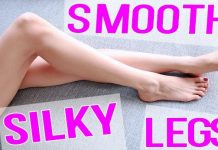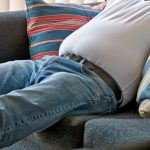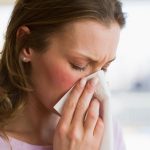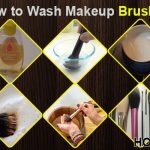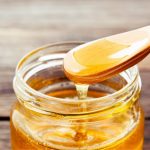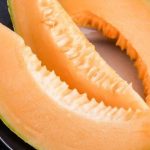In this article, we are talking about home remedies to treat varicose veins. Varicose veins are a universal problem in which unusually inflamed veins appear close to the skin’s surface. The problem generally takes place on the calves and thighs. It is caused when the veins increase weak walls or wrong operation of valves, which regulate blood flow. The condition can cause pain, restlessness, fatigue and feelings of burning, tingling, or throbbing, heaviness in the legs. The appearance of bulging veins is also a worry for many people.
Common factors that lead varicose veins are genetics, a profession that requires a lot of standing, use of birth control pills, obesity, hormonal changes and constipation in the body during pregnancy, menopause, and puberty.
Medical and surgical treatments for varicose veins can be very costly. You can attempt some home remedies to reduce the severity of varicose veins as well as decrease some of the distress they can cause.
Causes of Varicose Veins:
- Obesity
- Constipation
- Hereditary factors.
- Use of contraceptive pills.
- Hormonal changes during menopause.
- Hormonal changes during pregnancy.
- Hormonal changes during puberty.
- Professions that require being on one’s feet for long periods of time.
Signs And Symptoms:
- Swollen and twisted veins.
- Swelling of the ankles.
- Abnormally excessive bleeding.
- Deep purple or blue-colored veins.
- Telangiectasia, also known as spider veins.
- Stasis dermatitis, also known as venous eczema.
- Shiny discoloration of the skin.
Home Remedies to Treat Varicose Veins:
Contents
1.) Apple Cider Vinegar to Treat Varicose Veins
Apple cider vinegar is a superb treatment for varicose veins. It is a natural body cleaning product. It also promotes blood flow and circulation. When the blood starts flowing naturally, the weight and swelling of varicose veins will reduce to a great extent.
2.) Olive Oil to Treat Varicose Veins
Increasing blood circulation is vital for the treatment of varicose veins. Massaging with olive oil can help you to boost the circulation, thereby dropping inflammation and pain. Mix same amounts of olive oil and vitamin E oil and warm it little. Massage the veins with this oil for few minutes. Do this 2-3 times daily for one to two months. You can also add four drops of cypress essential oil in two teaspoons of warm olive oil and rub the affected area with this mixture.
3.) Garlic to Treat Varicose Veins
This herb is highly efficient for treating varicose veins. Garlic reduces inflammation and other signs of this condition. It also helps in the development of blood circulation. Moreover, it eliminates the toxins that are present in the blood vessels.
4.) Cayenne Pepper to Treat Varicose Veins
Cayenne pepper is known for its miracle treatment for varicose veins. Being loaded with vitamin C and bioflavonoids, it boosts blood circulation and relieve the pain of congested, swollen veins. Add one teaspoon of cayenne pepper powder to a cup of hot water and mix it well. Drink this mixture 2-3 times a day for one or two months for better results.
5.) Witch Hazel to Treat Varicose Veins
Witch hazel is a very efficient herb for strengthening blood vessels, hence, it can reduce the symptoms of varicose veins. It acts as an astringent, it also comprises a gallic acid and several essential oils that can help to treat the swelling and the pain as well. Soak a cloth in witch hazel and keep it on the affected area. Do this process for two or three times a day for one or two months.
6.) Parsley to Treat Varicose Veins
It is rich in vitamin C and consists powerful antioxidant that promotes the production of collagen and helps in cell restore and reproduction. It also contains rutin, which plays a great role in reinforcing the capillaries and hence is very helpful in reducing symptoms of varicose veins. Take some parsley in a bowl of water and bring it boil. Let the water cool down. Then add a few drops of essential oils. And put the solution in the refrigerator. With the use of a cotton ball, apply it on the affected area. Do this process for a few months for positive results.
7.) Horse Chestnut Seeds to Treat Varicose Veins
The seeds of horse chestnut have been used since ages to cure varicose veins. Horse chestnut seeds have anti-inflammatory and anti-swelling properties that can effectively increase ‘venous tone’ and, in turn, reduces the appearance of varicose veins. You can buy horse chestnut seed gel accessible in the market. Use the gel externally on the exaggerated area twice daily. When used regularly, it can significantly trim down leg pain and swelling.
8.) Grapevine leaves to Treat Varicose Veins
Grapevine leaves have a good quantity of flavonoids, which keep the veins strong. The leaves also have, anti-inflammatory, astringent, homeostatic and antioxidant properties that are very useful for treating varicose veins. Boil one cup of grapevine leaves in four cups of water for 10 to 15 minutes. Allow it to steep. Put it in a bucket and soak your feet in this solution for 5-6 mins. Then again put your feet in another bucket filled with cold water for 10 secs. Do this process for 3-4 times at, ending with the cold water soak and massage your legs in an ascendant direction with castor oil.
9.) Marigold to Treat Varicose Veins
The beautiful marigold flower is loaded with flavonoids and vitamin C that encourage the production of collagen and aid in cell restore and reproduction. It also helps develop circulation, thus helping lessen various signs of varicose veins. Boil marigold flower in a cup of water. Soak a cloth in the water and place it on the affected area. Leave it until it cools down completely. Do this process for 2-3 times a day for better results.
10.) Exercise Regularly to Treat Varicose Veins
It is recommended, that regular exercise helps fight with varicose veins. Walking or running will help your leg muscles to get strengthened and toned. Moreover, it promotes the blood circulation and controls the weight. However, patients should not sit or stand for more than a half hour to stop blood from pooling in the affected area of the legs. Likewise, even crossing the legs is not suggested, as it can injure the veins.
Other Ways to Get Rid of Varicose Veins:
1.) Foot Exercises to Treat Varicose Veins
Stretch and contracting your feet can force blood to move up, moving it out of the veins. Now, sit and keep your legs high while trying out these 3 exercises mentioned below:
- Push your ankles by stretching your foot up and down.
- Exercise your ankles by revolving your foot clockwise and then anti-clockwise.
- Bend your knees and let your foot slide in and out.
2.) Rest Your Legs to Prevent Varicose Veins
It is essential that give a break to your feet for a while and avoid standing for too long. To get relief from the symptoms of varicose veins, rest your legs by sitting down or take a short walk. This will help the encourage the blood flow to the muscles that will push blood up to your brain. Proper blood circulation is vital for the treatment of this problem.
3.) Do Not Sit For Too Long to Cure Varicose Veins
According to professionals, sitting for too long can also be the reason for varicose veins. Get up and take a short walk or stretch your legs at regular intervals for a few minutes. Standing on your heels and stretching your heels 10 times is the best exercise to get rid of varicose veins. Gain relief from varicose veins and ease various symptoms.
4.) Eat A High Fiber Diet to Get Rid of Varicose Veins
As constipation is one of the major causes of varicose veins. This means you need to take extra care of your digestive system to stop constipation and other stomach related issues to keep your bowl clean. A diet loaded with fiber will help you to treat varicose veins. It is also helpful for spider veins. It will help you get relief from varicose veins and also encourages your overall health. Include fresh fruits and vegetables as well as plenty of fish in your diet.

